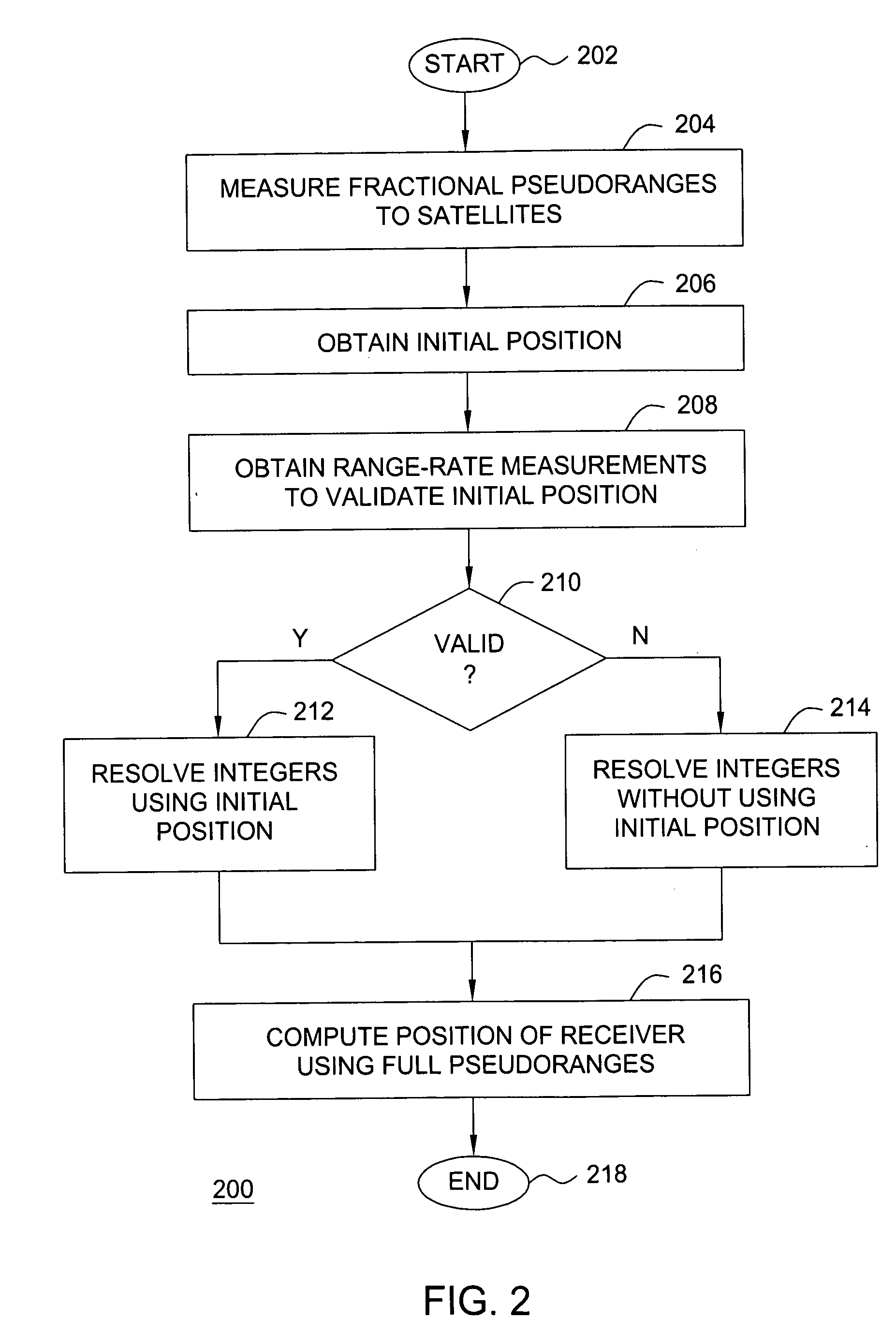Method and apparatus for validating a position in a satellite positioning system using range-rate measurements
a satellite positioning system and range-rate measurement technology, applied in the field of satellite positioning systems, can solve the problems of large position errors, large range errors of up to 0.8 m, and similar sized errors in the position of gps receivers
- Summary
- Abstract
- Description
- Claims
- Application Information
AI Technical Summary
Problems solved by technology
Method used
Image
Examples
Embodiment Construction
[0021] A method and apparatus for validating a position in a satellite positioning system (SPS) using range-rate measurements is described. Those skilled in the art will appreciate that the invention may be used with various types of mobile or wireless devices that are “location-enabled,” such as cellular telephones, pagers, laptop computers, personal digital assistants (PDAs), and like type wireless devices known in the art. Generally, a location-enabled mobile device is facilitated by including in the device the capability of processing satellite positioning system (SPS) satellite signals.
[0022]FIG. 1 is a block diagram depicting an exemplary embodiment of a position location system 100. The system 100 comprises a remote receiver 102 and a server 108. The remote receiver 102 is configured to receive satellite signals from a plurality of satellites 112 in a constellation of satellites. The remote receiver 102 processes the received signals to produce satellite measurement data (e....
PUM
 Login to View More
Login to View More Abstract
Description
Claims
Application Information
 Login to View More
Login to View More - R&D
- Intellectual Property
- Life Sciences
- Materials
- Tech Scout
- Unparalleled Data Quality
- Higher Quality Content
- 60% Fewer Hallucinations
Browse by: Latest US Patents, China's latest patents, Technical Efficacy Thesaurus, Application Domain, Technology Topic, Popular Technical Reports.
© 2025 PatSnap. All rights reserved.Legal|Privacy policy|Modern Slavery Act Transparency Statement|Sitemap|About US| Contact US: help@patsnap.com



